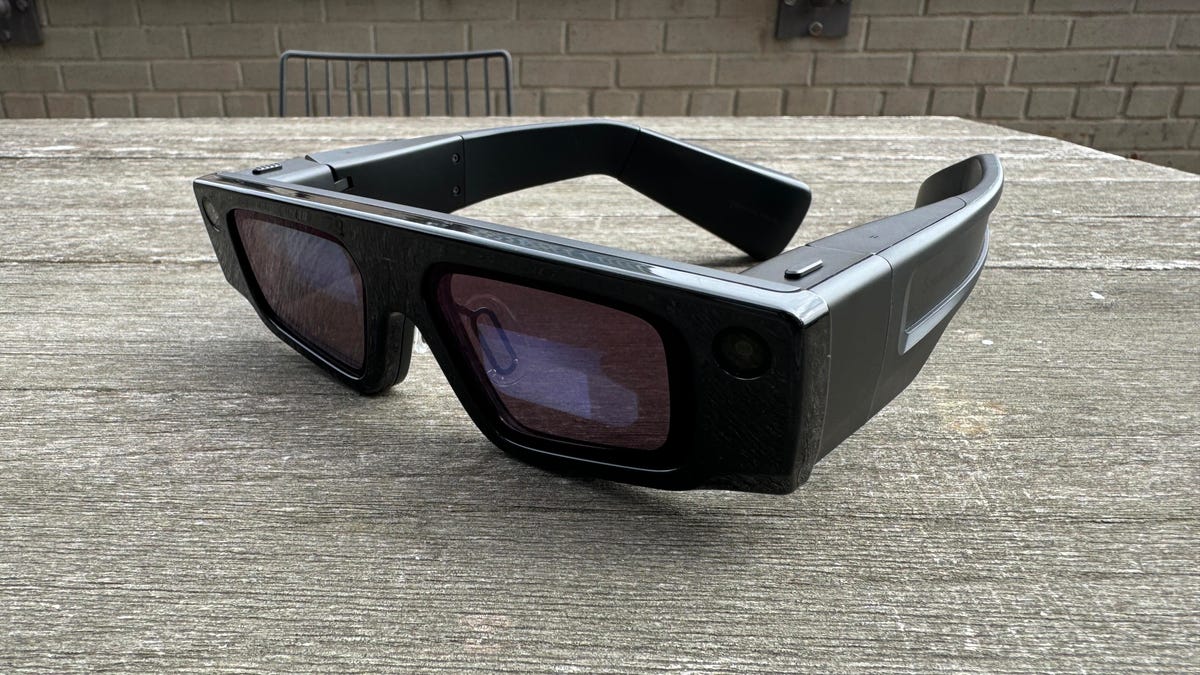Snap Previews Next‑Gen Spectacles with New OS, AI Translation and Hand‑Tracked Gaming

Key Points
- Snap plans a smaller, consumer‑focused Spectacles model.
- Snap OS 2.0 adds a richer browser, media gallery, and social video app.
- Live translation shows captions floating in 3D space beneath speakers.
- Spotlight AI provides contextual labels and step‑by‑step assistance on real‑world objects.
- Hand‑tracked version of Synth Riders demonstrates fitness gaming potential.
- Current prototype is bulky, has limited field of view, and lacks prescription inserts.
- Snap aims to compete with Meta, Google and Apple in the emerging AR glasses market.
Snap is gearing up to launch a smaller, consumer‑focused version of its Spectacles AR glasses. CEO Evan Spiegel highlighted that the upcoming hardware will be more compact than the current developer‑focused model. In parallel, Snap demonstrated Snap OS 2.0, which adds a richer web browser, media gallery, and AI‑driven tools such as live translation and the Spotlight assistive feature. The company also showcased a hand‑tracked version of the fitness game Synth Riders, illustrating how the glasses could support interactive AR experiences. While the current prototype remains bulky, lacks prescription inserts, and offers a limited field of view, Snap’s roadmap aims to compete with offerings from Meta, Google and Apple.
Snap’s Next‑Generation Spectacles Vision
Snap’s chief executive Evan Spiegel told us that the company’s forthcoming Spectacles will be noticeably smaller than the thick, developer‑centric pair that has been available for testing. The new design is intended to be a true consumer product, moving beyond the prototype stage that currently requires users to make do with makeshift prescription inserts and a narrow vertical field of view.
Snap OS 2.0: New Software Foundations
Alongside the hardware preview, Snap ran its latest operating system, Snap OS 2.0, on the developer glasses. The update brings a more capable web browser, a dedicated gallery app for viewing video captures taken with the glasses, and an app that surfaces Snap’s own vertical social videos and comments. These software enhancements are meant to make the glasses feel like a stand‑alone AR platform that can run a variety of 3D apps without tethering to a phone.
AI‑Powered Real‑World Assistance
One of the most striking demonstrations involved live translation. Snap’s translation feature displayed pop‑up text boxes with translated captions that floated directly below a speaker’s head in three‑dimensional space, making the experience feel embedded in the environment rather than intrusive. The company also introduced an AI‑driven assistive tool called Spotlight. By pointing the glasses at appliances such as a coffee machine or refrigerator, users received on‑screen labels and step‑by‑step instructions generated on the fly, illustrating how generative AI can provide contextual help in everyday situations.
Hand‑Tracked Gaming and Fitness
Snap showcased a hand‑tracking version of the rhythm‑based fitness game Synth Riders. Although the experience felt rough due to the limited field of view and the bulk of the current hardware, the demo highlighted the potential for fitness‑oriented AR gaming on a glasses form factor. Snap’s ability to run such a game signals its ambition to compete in a space that Meta and other players are also targeting.
Positioning Against Competitors
Snap’s efforts place it among a growing roster of companies developing AR glasses, including Meta, Google and Apple’s Vision Pro. While Snap’s glasses are currently bulkier and lack prescription support, the company’s focus on self‑contained, hand‑tracked AR experiences differentiates it from competitors that rely on external devices or larger headsets. The upcoming, smaller Spectacles aim to close that gap and present a more polished alternative to the current prototype.
Looking Ahead
Snap’s roadmap suggests a concerted push to bring a consumer‑ready AR glasses experience to market, with a tighter hardware form factor, expanded software capabilities, AI‑enhanced real‑world overlays, and interactive gaming. The company appears intent on launching before or alongside rival announcements, positioning its Spectacles as a viable option for users seeking immersive AR without the bulk of traditional VR headsets.